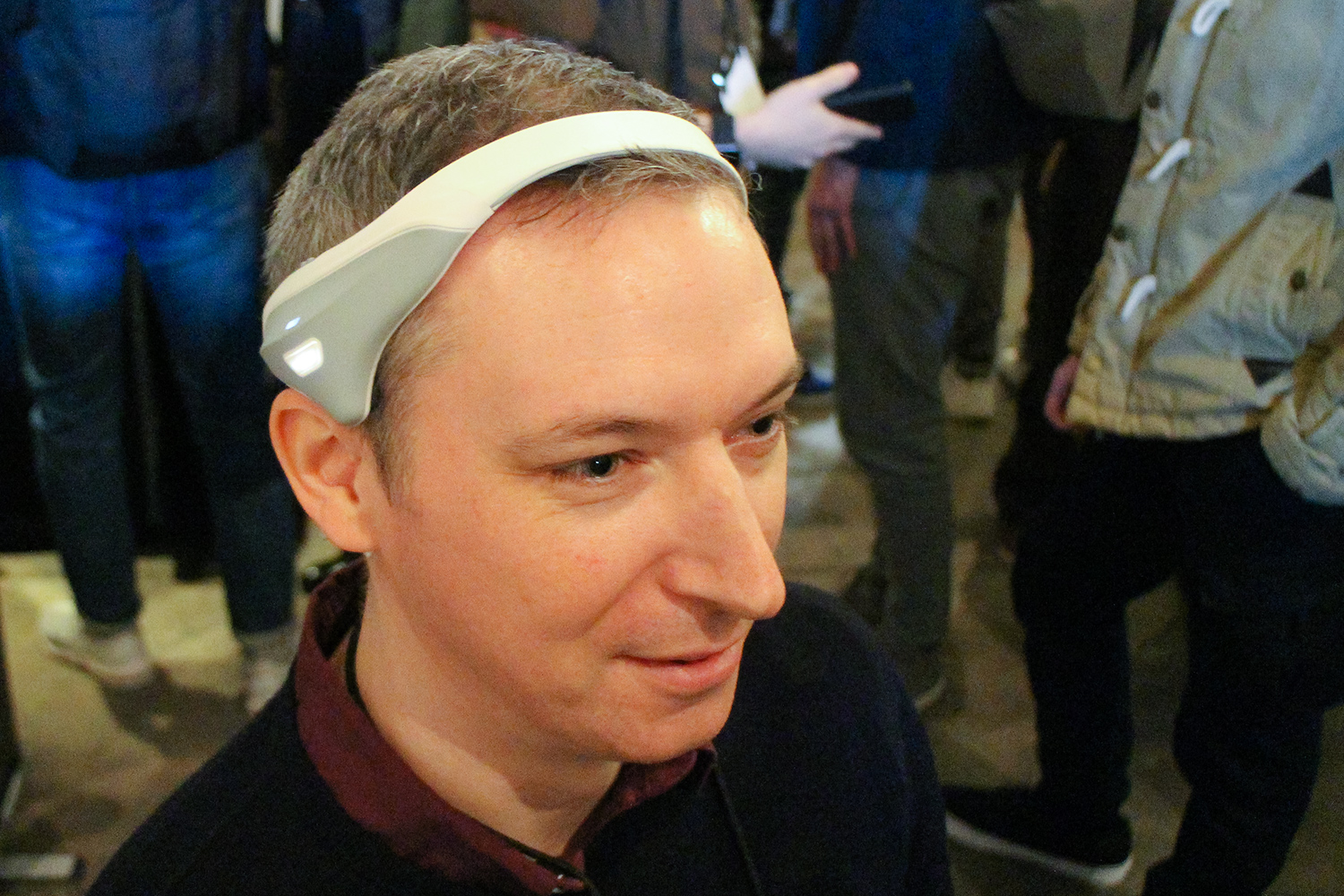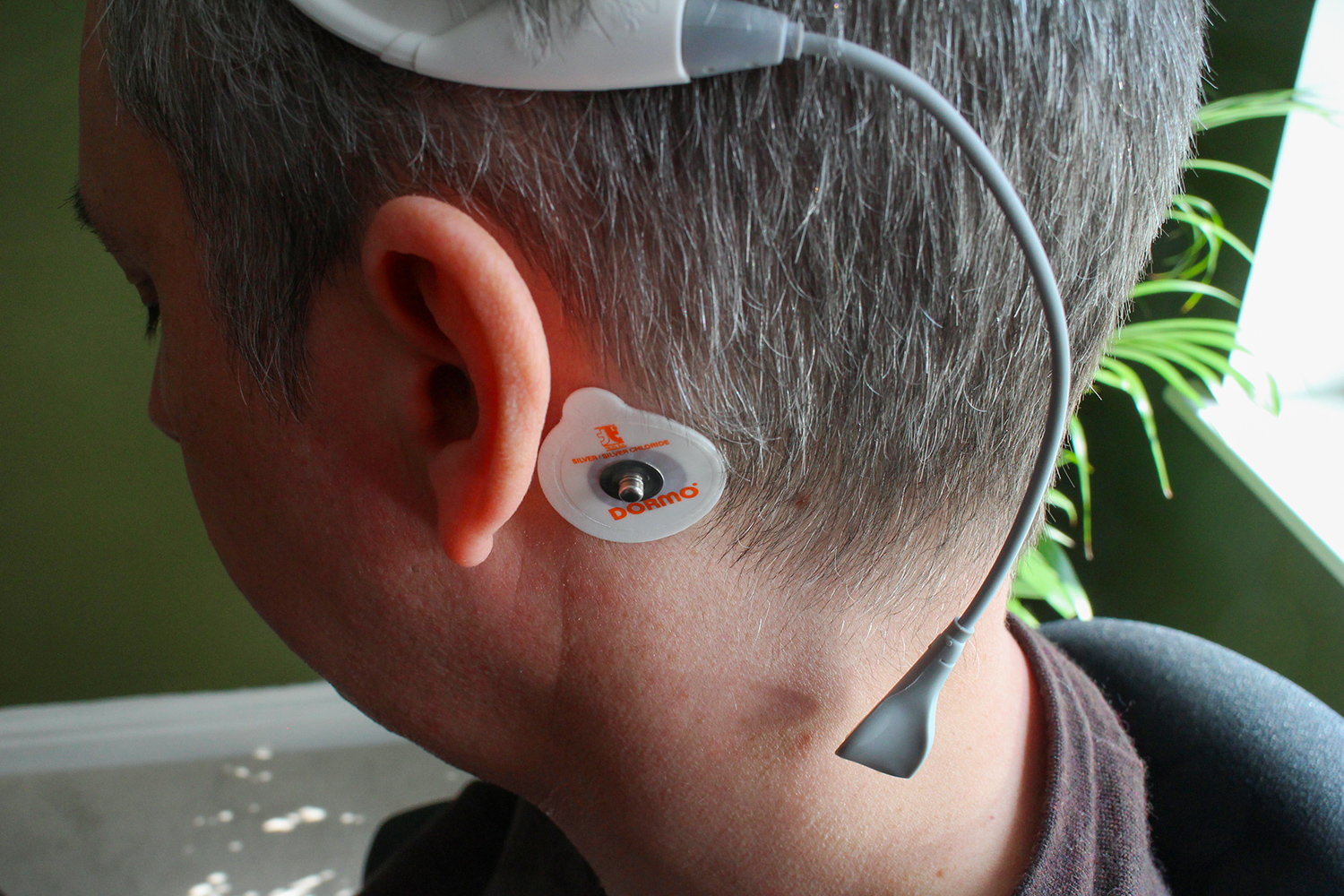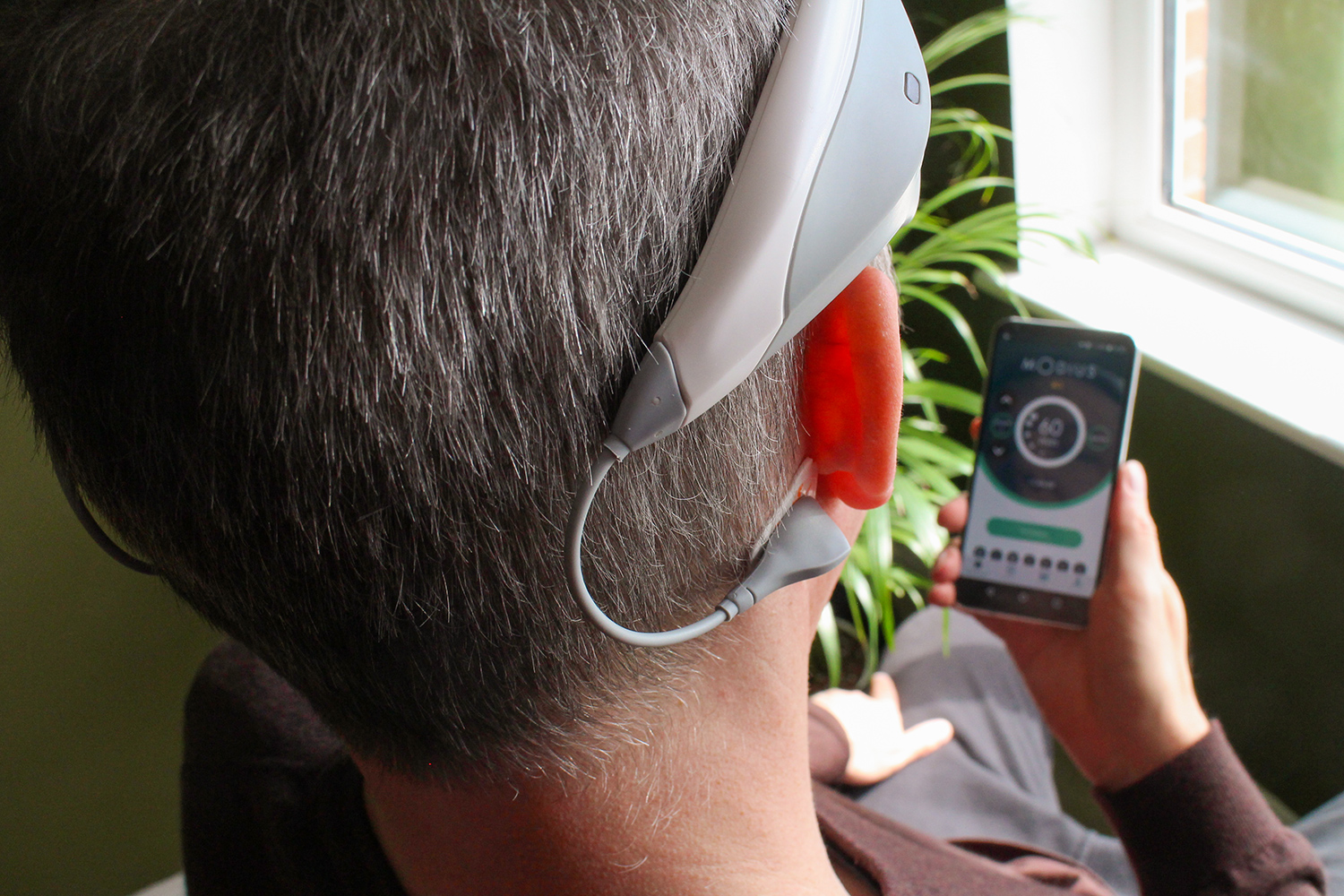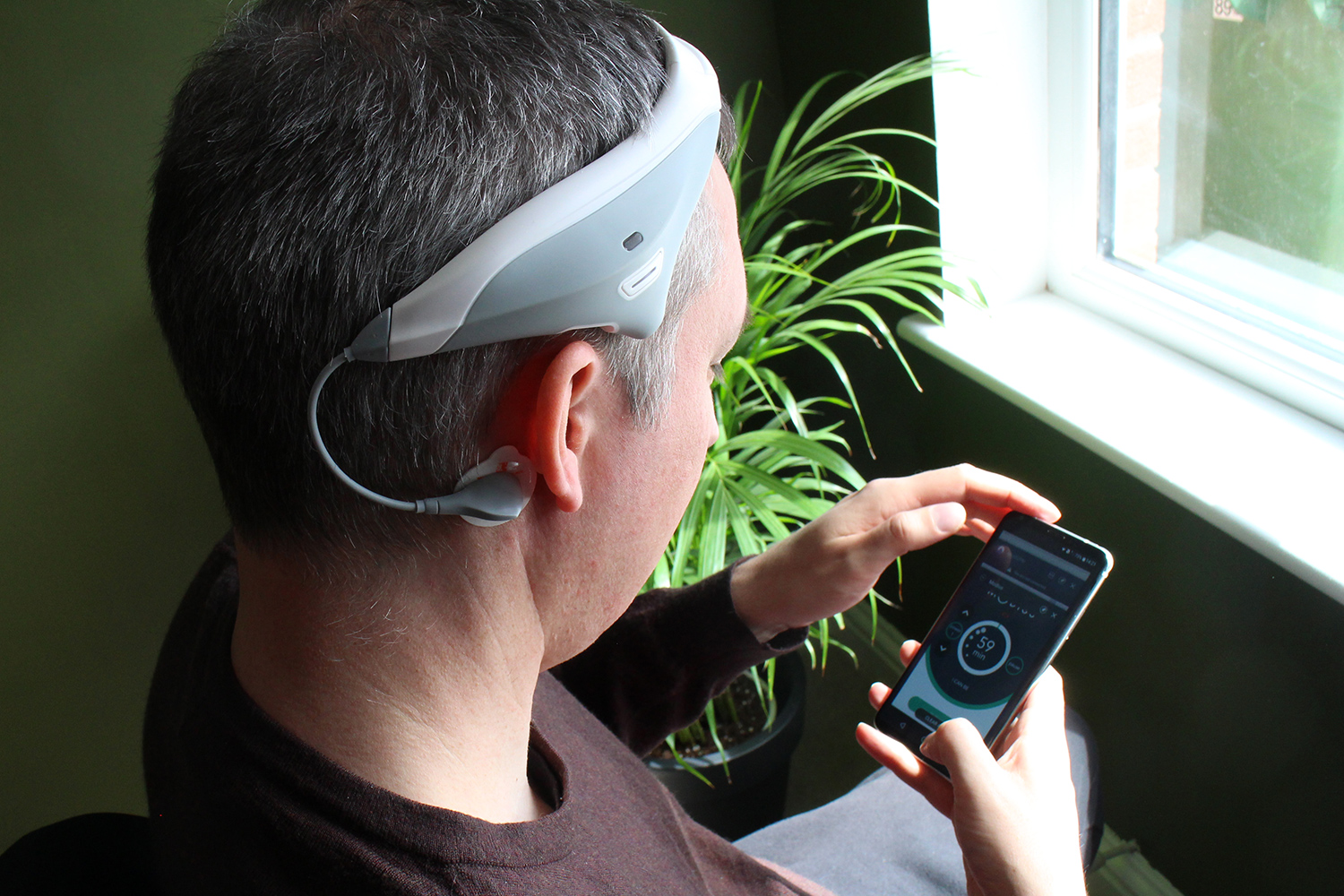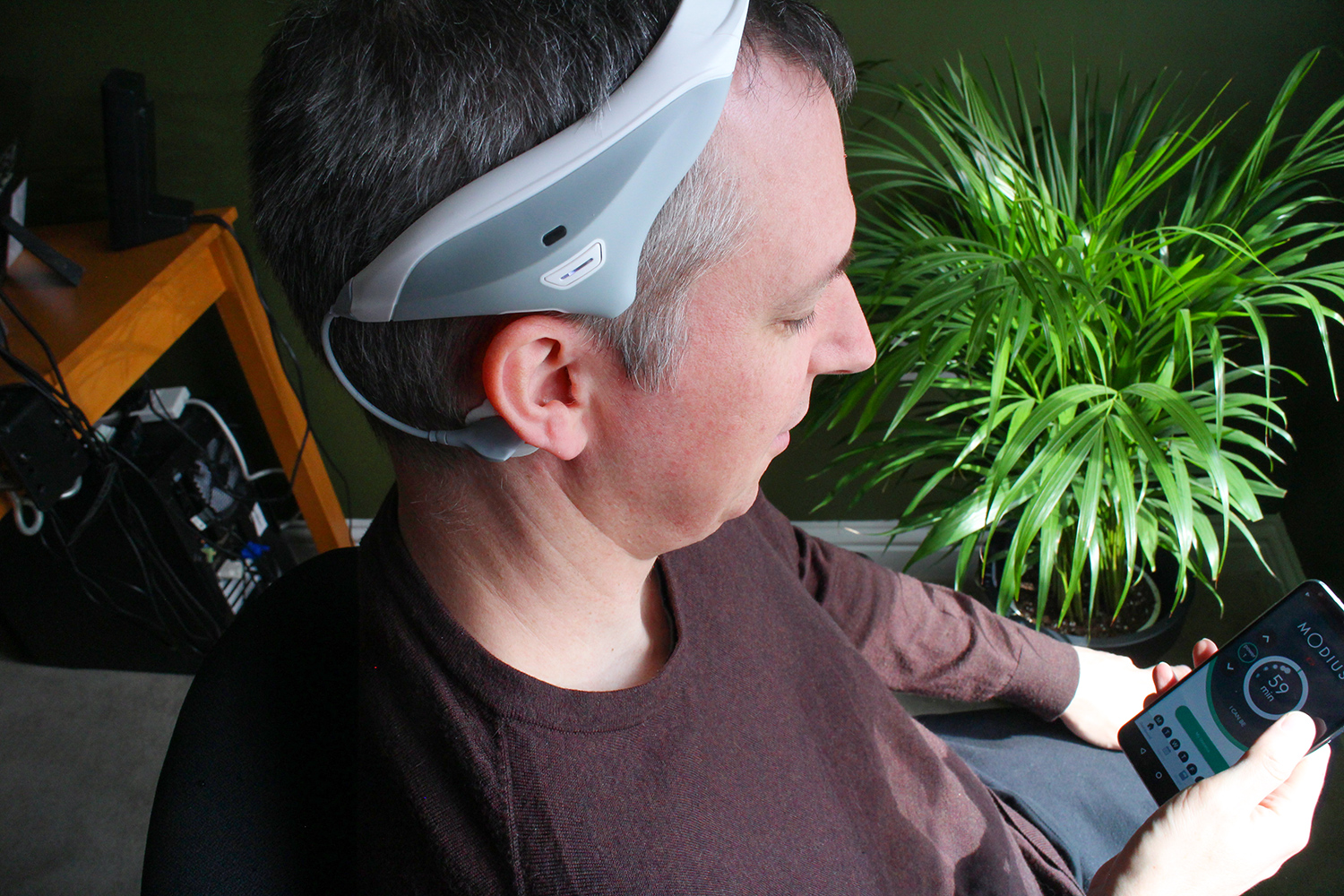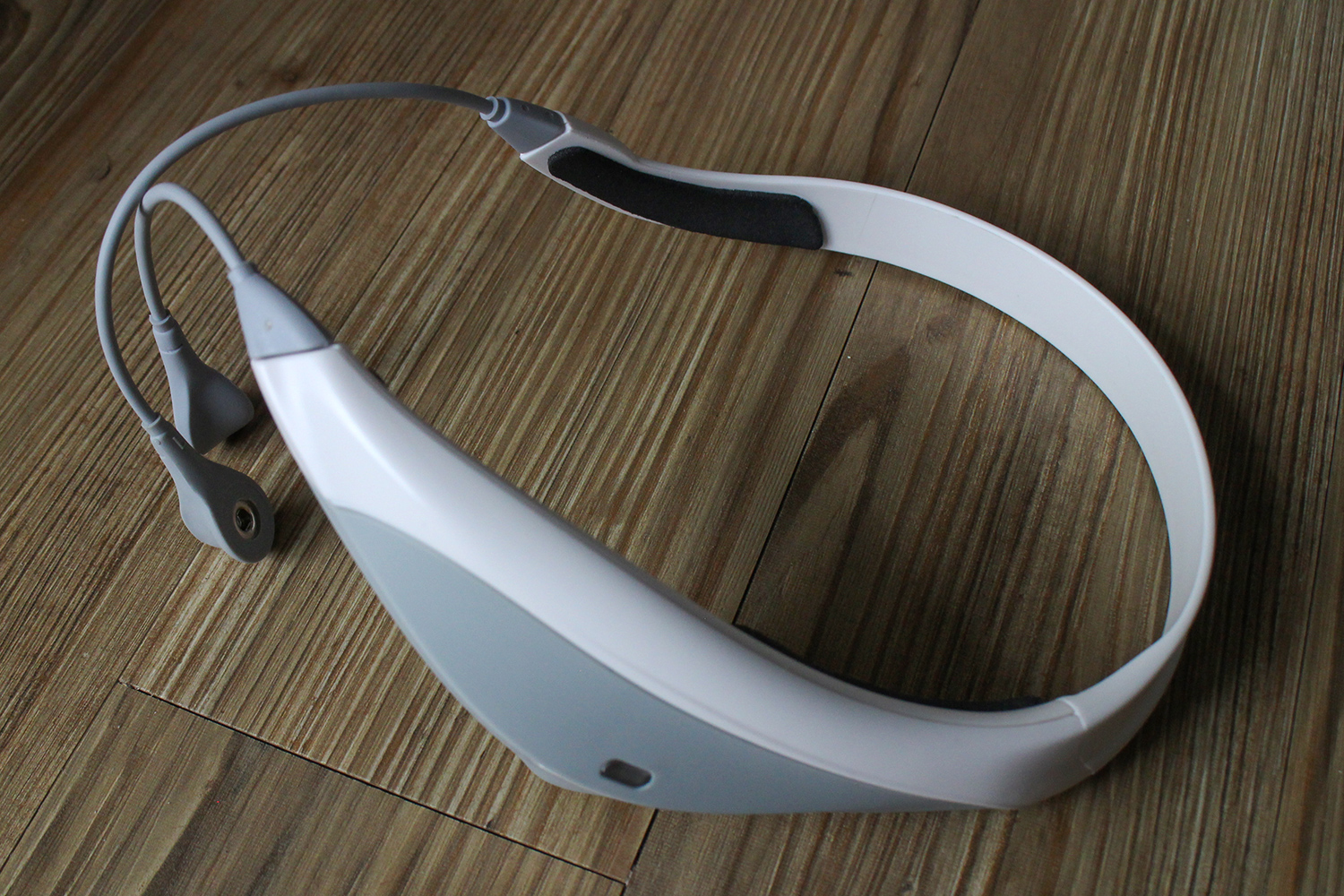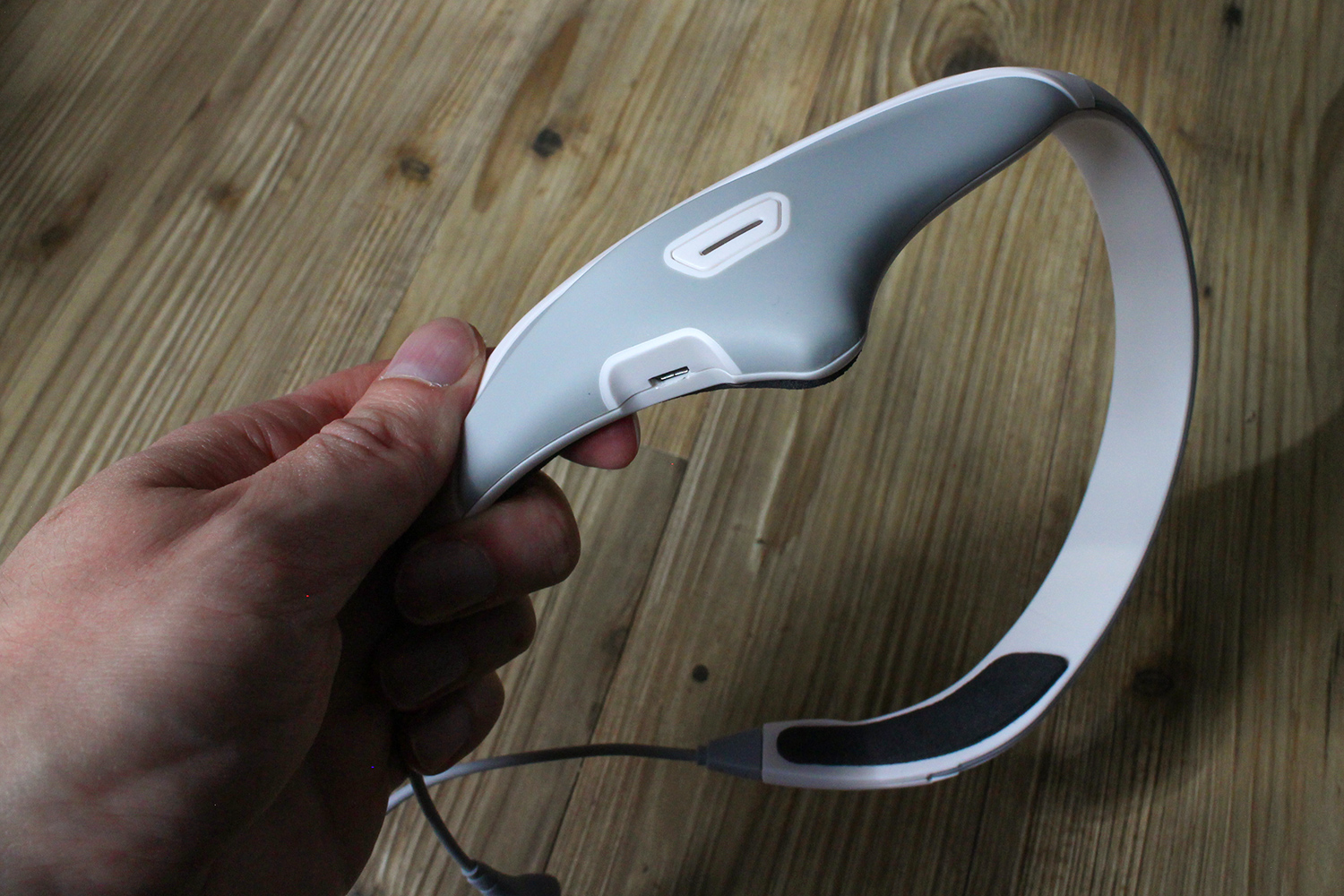Most of us could do with losing a few pounds. We know that being overweight is bad for our health, but with cheap, abundant, delicious food versus the time and effort it takes to exercise properly, it’s not surprising that more than 30 percent of Americans are classified as obese.
The weight loss market in the U.S. is worth $66 billion annually, according to Marketdata, but there’s a growing realization that diets and supplements simply don’t work for most people. Exercise does, but shedding weight and keeping it off can be challenging.
What if you could wear a headset for an hour every night and suppress your appetite or speed up your metabolism? That’s exactly what the Modius headset is designed to do. We tried it out for a few weeks to find out how well it works, and what it’s like to use. In short, the Modius headset gives you small electric shocks to stimulate your hypothalamus via your vestibular system. We’ll delve into the science a bit more in due course, but basically you stick electrodes to the bony bit behind your ears, attach the headset, and then use your phone to control it. Let it shock you for up to an hour a day and you should notice a drop in appetite and fat storage, an increase in your metabolic rate, or possibly both.
The set up
In the box you get a Modius headset, some medical wipes, some electrode pads, and a USB to MicroUSB charging cable. You’ll also need to install the Modius app for Android or iOS. We had some issues with the first headset we received – it refused to charge up properly. After trying to reset it several times, the company behind the product — Neurovalens — shipped us a new one.
Second time around there were no issues with charging, and we easily connected to the headset via Bluetooth on an LG V30. The app is fairly simple, and runs you through the process of getting started. It acts as a remote control for the headset, which has 10 levels of intensity. You can add details about your current weight, fat percentage, and waist line into the app, and it will track your progress over time, displaying your body mass index and a chart plotting your weight change.
You begin by using a medical wipe to clean the bony area behind each ear, then attach a sticky pad with an electrode, and finally attach the wires from the headset which snap into place like a typical stud closure on a purse. The headset is lightweight and comfortable to wear. There’s a button on the right that you press to pair with your phone and then you can use the app to start a session.
What’s it like to use?
The makers recommend that you sit or lie down to use the Modius headset because it affects your balance. You may not feel anything beyond a light tingling behind your ears to begin with, but as you increase the levels by tapping in the app on your phone, you’ll feel the electric shocks and the room will start to sway. It’s an unusual feeling that’s akin to being on a boat in choppy waters.
We started to dread having to put it on each night.
The first time we tried it out was only for a few minutes at MWC. The swaying feeling wears off instantly when the headset is deactivated. Trying it out at home for a full hour session was a different prospect. We felt nauseous and uncomfortable after 10 minutes or so and so we stuck with a low level of intensity, as recommended. After the session, it took a few minutes for the feeling of nausea to subside.
We persisted with it, using the headset for an hour each night for two weeks, gradually increasing the intensity, but it didn’t get any more comfortable. The feeling of nausea was joined by a bit of a headache on some evenings, and we started to dread having to put it on each night. After forgetting to take the Modius on a short vacation, we felt relief, but we couldn’t face the prospect of using it again when we returned.
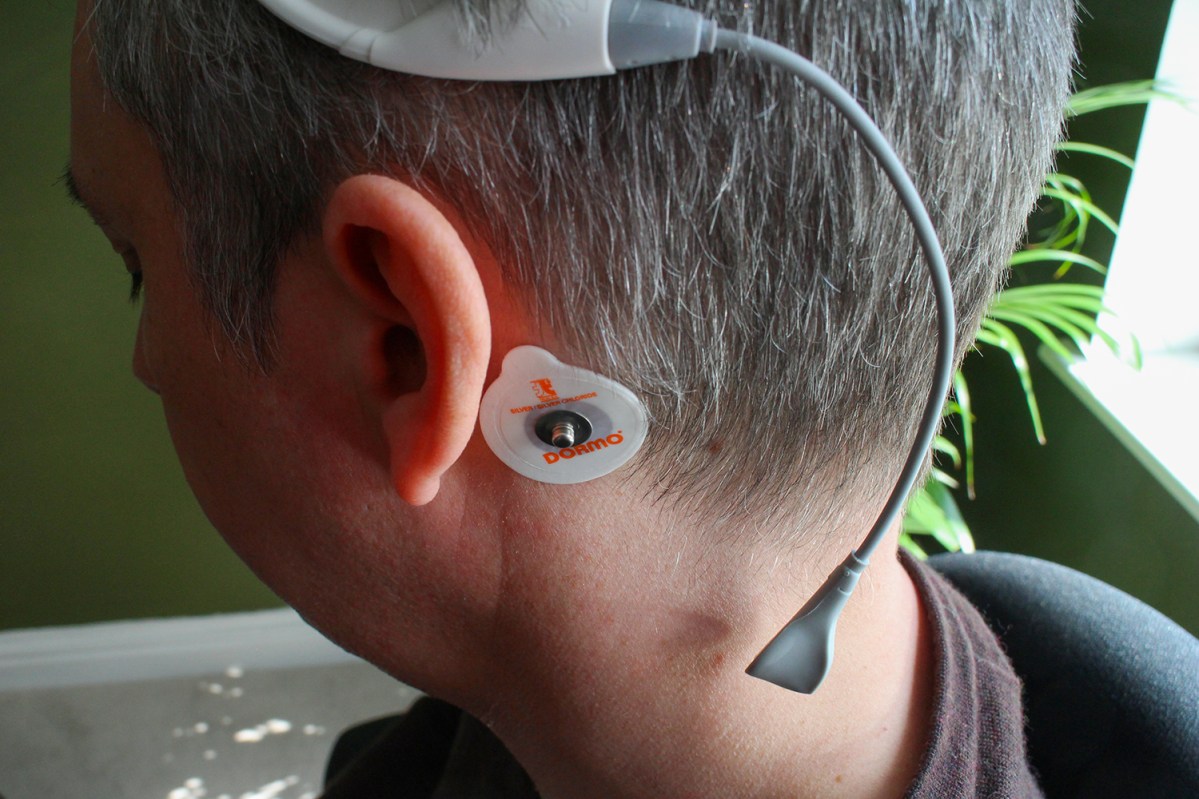
Everyone is different, and your mileage may well vary, but for us the Modius headset was no fun at all to use. The feelings of motion sickness were quite intense and unpleasant. It felt like a chore to use the headset daily, we frequently checked the app to see how much time was left before we could turn it off, and it left us with a light headache after a couple of sessions.
The app is also a little temperamental and didn’t always work properly. We found that force closing it and then starting it up again usually got it working.
The science behind it
We spoked to the highly credible and personable neuroscientist Dr. Jason McKeown, the CEO of Neurovalens, at MWC. He explained that the shocks are stimulating your vestibular nerve and sending a signal along your brainstem to impact your hypothalamus. The idea is that your brain has determined how much fat your body should store and what rate you should burn it at, and dieting or exercise can only go so far to combat that.
The Modius headset is sending signals to your brain telling it you’re engaged in increased physical activity.
This idea that everyone’s body has a natural weight it tends to want to be at has a lot of support, but whether you can change that weight by sending electrical signals to your brain is far from clear.
The Modius headset is sending signals to your brain telling it you’re engaged in increased physical activity. These horizontal movements stimulating the utricle are behind the swaying feeling and they’re also supposed to trigger your body to burn fat faster because it makes sense for your body to be leaner for prolonged increased activity — it can save energy if it doesn’t have to carry around so much fat.
There have been a few studies over the last 50 years that show vestibular stimulation causes a significant reduction in the body fat of animals.
Does it get results?
It’s important to note that Neurovalens suggests the minimum effective period before people notice reductions in body fat and weight loss is between six and 12 weeks. However, it also suggests that most users feel a reduction in appetite and carb cravings from as early as week one.
For us there was no reduction in appetite, except for the period when we were actually wearing the headset and immediately after, when we felt nauseous. In fact, after the first week we felt an increase in appetite and wondered if it might be linked to an increase in our metabolic rate.
We deliberately didn’t change our diet or limited exercise routine while using the headset in the hopes of isolating it as the cause of any weight change. Our weight fluctuated by two or three kilograms (four to six pounds) day to day, which isn’t unusual. We got briefly excited about a nine-kilogram drop after a week and a half, but it turned out the kids had been messing with the scales. After two weeks of using the Modius headset our weight had dropped by just under one kilogram.
Weighing ourselves again today, more than two weeks after we stopped using the Modius headset our weight is down by another one kilogram. Unfortunately, this doesn’t really tell you anything about the effectiveness of the headset.
Neurovalens claims that almost 80 percent of people using Modius daily for an average of three months and recording at least five weight entries, lost weight – 7 pounds (around 3 kilograms) on average. With 10 percent of them losing 18 pounds on average. However, this relies on self-reporting and doesn’t consider their diet and exercise regime.
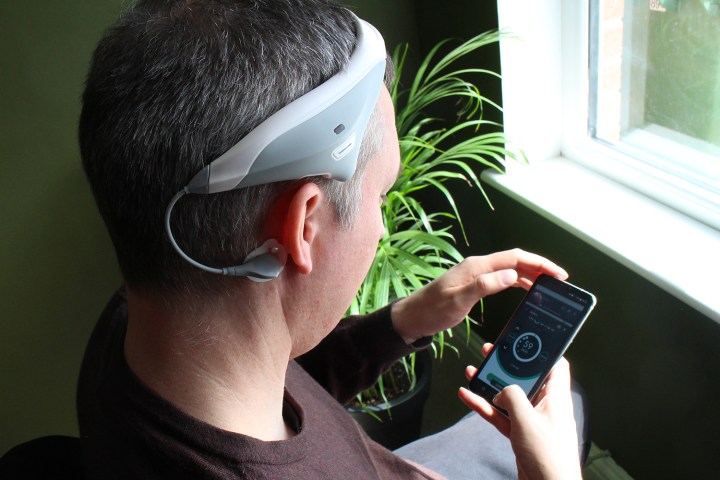
To date, Neurovalens has only conducted one study which followed nine people for 16 weeks and showed that the metabolic rate did speed up and that appetite fell. The control group didn’t lose as much weight as the others, but this is too small a group to draw any major conclusions, and the study wasn’t peer reviewed.
There is a new clinical trial underway, but the results aren’t expected until December 2019.
Looking at the anecdotal evidence of people using the Modius headset, we see some positive and some negative reviews. However, if you’re willing to spend hundreds of dollars on a weight loss device, it’s likely that you’re motivated to lose weight. How can we separate changes in diet and exercise from headset use? How can we be sure that it isn’t just a placebo effect?
It’s a wellness device
The fact that Modius is currently classified as a “wellness device”, which means it doesn’t need FDA or MHRA approval, means that it has not been fully tested for safety or effectiveness. It’s important to note that Neurovalens is careful not to make any promises. You should read the FAQ on the Modius website if you’re thinking about trying it.
Neurovalens is careful not to make any promises.
Many of the people we told about it were mildly horrified that we were willing to test it out and “mess with our brain”. We’re not aware of any lasting effect, the nausea and headaches ceased almost immediately after we stopped using it. When we spoke to Dr. McKeown, he also mentioned anecdotal evidence of the Modius headset relaxing people and helping them sleep better, but unfortunately, we didn’t find that to be the case for us. He did also stress that it wouldn’t work for everyone.
What does it cost?
If you want to buy the Modius headset then you’ll have to shell out $500 (£300 in the U.K.). That’s a lot of money to pay, though the 90-day money back guarantee does remove some of the risk. You can always try it and return it if you don’t feel it’s working for you but be prepared to pay shipping costs.
It comes with three months’ worth of wipes and pads. You can subscribe and pay $36 to get a new pack of wipes and pads every three months or buy three months’ worth for $40. Based on our brief research, it’s a reasonable price for the wipes and pads.
There is also a 12-month limited warranty that covers basic defects in the headset.
Worth a try?
The Modius headset claims to help you reduce your appetite and lose weight, but it is impossible for us to say with any certainty whether it works. The idea you can lose weight without changing your diet or exercising more is obviously enormously attractive, but after using it we’re still skeptical.
There’s a lot of weight loss tech out there, but the vast majority focusses on your eating or your exercise. We’re not aware of anything else out there that’s quite like the Modius headset, though we are seeing more neurostimulation devices hitting the market, for example, we recently tried out Kortex which is designed to relax you and improve sleep.
If you’ve tried different diets and exercise regimes and you’re finding it hard to shift the weight, then you might want to give Modius a try. If we had bought it, instead of borrowing a review unit, we would definitely have returned it for a refund. The motion sickness was a killer for us, but clearly a lot of people are using it happily, so your experience may be very different.
If you do decide to try it, we advise caution and a healthy dose of skepticism. While we have no doubts about Neurovalens good intentions and Dr. McKeown’s faith in the device, until we see the results of a proper clinical trial, there’s no way we can say it works with any confidence.
